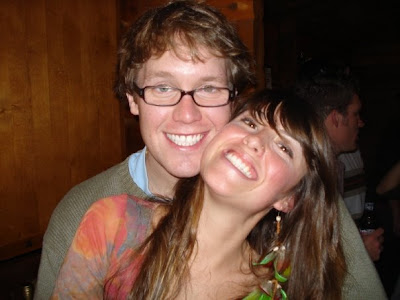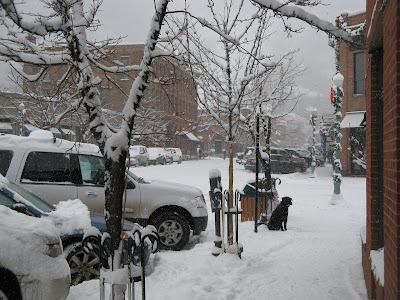So I did a random google for Allan Suttle and found this article. See if you can find his quotes...
The Biggest Names in Lighting Get Bigger
Lois I. Hutchinson
April 25, 2000
Industry experts divided over the effect on end-users
Over the past 3 years, the largest U.S. lighting manufacturers have greatly expanded through several rounds of mergers, acquisitions of smaller companies, and distribution agreements. Many industry professionals forecast higher prices, less product innovation, and an abundance of "vanilla" lighting design. Others, however, cite consolidation in related and unrelated industries and predict lower prices and healthy competition. The manufacturers say they can expand their product lines to provide a complete package of equipment, offer one-stop shopping, and establish customer support infrastructure.
David Naugher, an electrical engineer at Texas Tech University in Lubbock, TX, believes that the conglomerates invest heavily in distribution and customer service. "I always seem to find better support, better response to problems, from the bigger companies because they're able to absorb those costs. The smaller companies tend to try to find a way around it, which never seems to solve the problem. They just don't have the backing."
Others argue that small manufacturers provide the best customer service and that smaller customers "get lost" by the conglomerates. "As a smaller customer, a smaller manufacturer will tend to give us really strong customer service, to really go that extra mile. Plus they might be more willing to customize," said Larry Poturalski, a facilities engineer/electrical at the State University of New York, Buffalo. "A bigger manufacturer may just sit on its laurels. You get the rep in, and he sits there and says, 'Well, that's the [Company X] fixture. Take it or leave it.'"
According to Poturalski, "The fixtures that are coming out are becoming very generic-the same across the board. There's no ingenuity.... One company is buying out the other and there's not much money going toward R&D to come out with new fixtures. They're more or less just copying the same types of fixtures." Poturalski said that he is looking for luminaires with added energy-efficiency features, such as occupancy sensors and dimming ballasts.
"Agglomeration begins to rob us, the end-users, of bright, new, and innovative products. Now the only thing that the big companies seem to be concerned about is keeping up with the other big company," said Naugher. "There are specialty manufacturers out there, but when they get sucked up by the big guys they seem to leave the innovative people behind."
Larry Powers, president and CEO of Genlyte Thomas Group, maintains that the consolidated marketplace will increase profitability and therefore spending on R&D. "By being a larger company, more centralized, we're able to provide a broader array of product.... We're able to put more money into market research and into product development, so we're coming out with newer products faster and at lower cost."
Price remains the biggest question as the conglomerates go to market with their newly acquired lines. Many believe that fewer competitors in the marketplace will -drive up prices, but others observe that economies of scale and heated competition among a few players will actually lower prices.
"By putting the two companies together [Genlyte and Thomas] we can now select the best, lowest-cost factories and facilities in order to produce some common-type products....We can now run them two and three shifts versus one shift," argued Powers. "If you look at a typical lighting fixture, particularly in downlighting and in the fluorescent side of the business, as much as 65 to 70% of the cost of the product is in material: ballasts, sockets, steel or aluminum, whatever. Obviously, if you're purchasing larger quantities of these products, you're going to purchase them at better prices and be able to compete."
Lower overhead also contributes to these economies of scale and the anticipated lower prices. "By us becoming a more efficient, a better supplier of lighting fixtures to our customers, it does help us to, in fact, reduce our pricing and/or in some cases it help us to improve our profitability."
The Ballast Model
Wayne Morrow, a consulting electrical engineer with E Cube, Inc. of Boulder, CO, cites consolidation in the lamp, ballast, and occupancy sensor sectors. "There's a tremendous amount of innovation in the lamp business, even though there's only a small number of lamp manufacturers. I don't know why the fixture industry would be any different....
"The ballast market has been 'commoditized' for a long time. The innovations happened in technology and now they're happening in manufacturing. And the things that are going on there are really driving the prices down." Despite the small number of manufacturers, even prices for dimming ballasts have dropped 80%, according to Morrow. "You have to be able to buy in huge quantities and manufacture 24/7 to be efficient and competitive. So the idea that a small company could compete with Motorola or MagneTek or Advance or Energy Savings, forget it.... Standard lighting fixtures are the same. The only way that anybody is going to survive in this industry is to be big enough to support the type of manufacturing methods and buying power that it takes to stay competitive in a maturing market."
In that light, the recent acquisition of Motorola Lighting by Osram Sylvania, one of the "big three" lamp manufacturers, seems an almost necessary step, given the close affiliation of Philips Lighting Company and Advance Transformer, which are both owned by Philips, and the closer relationship between GE Lighting and MagneTek. Osram has long embraced a lamp-ballast system approach to sales and had marketed ballasts in the U.S. "We have always looked for locations to manufacture within the U.S.," said Fritz Schipp, vice president and general manager of Electronic Control Systems for Osram. "More and more we will have new systems coming out that need a ballast dedicated to the lamp." The advantage to Osram is concurrent introduction of both new lamp technology and an appropriate ballast for the U.S. market. In addition, Osram's Electronic Control Systems division is greatly expanded through Motorola's existing market share and R&D.
Morrow maintains that innovative boutique manufacturers will continue to spring up, even in a mature industry. "There's always going to be a place for those folks because there are a lot of products that don't fit into the commodity categories, especially light fixtures that are kind of artistic. There's no way that a large company can be very competitive within those areas that have low volume and lots of designer input."
Some companies with regional marketing, personalized sales and service, and evolving product lines may excel and not be quickly undercut by the larger manufacturers. The highly successful companies that continue to meet customer needs will likely be absorbed and changed as a result, Morrow added, leaving room for the next generation. "You've got to provide something that the other guys aren't."
Morrow hopes to join the next generation himself. He recently founded a small lighting controls manufacturer called StarField Controls.
It Ain't Over Yet
"We're right in the middle of this trend," according to Allan Suttle, president of California Lighting Sales, the Lithonia Lighting rep in Los Angeles. "There's almost a frenetic pace, almost a desperation to get out there and buy the best companies before somebody else does.... I think the reps are really helping to grease that process."
Cooper Lighting, Genlyte Thomas Group, JJI Lighting Group, Lighting Corporation of America, and Lithonia Lighting have all made major acquisitions. "The little manufacturers are the ones that are getting trampled when you've got your Lithonias and your Coopers slugging it out," Suttle said. "I've heard that both of them have multi-billion dollar aspirations, so they are going to grow it both internally and by acquisition....
"Both of them are using their cost advantages to do everything they can to write the orders. So when you've got two corporations that have lots of assets, lots of cash, they are showing the market that they are willing to spend that cash to establish cost leadership. They then use that cost leadership to gain market share."
Suttle described the enormous pressure exerted on management by boards of directors: "They believe in the old Harvard business school approach that you'd better be number one or number two in any market, or get out.... They're very aware of how growth, both sales growth and profit growth, drives the stock price. I think this is, in many cases, a stock market game that they're playing."
Powers agreed. "Up until recent years, our industry was extremely fragmented, lots of small companies. Many of those companies have now been acquired and are part of one of the major lighting companies. There has been a lot of consolidation, and I believe there will continue to be additional consolidation in our industry. It's going to be more and more difficult for the little independent manufacturer to compete head-to-head with the major suppliers of lighting fixtures."
Powers sees all the conglomerates "scurrying" to fill holes in their lines in order to cover desired market segments. But he believes it's the natural evolution of a maturing industry; that competition will be among fewer, larger, healthier companies rather than many small companies. "My opinion is that if profitability for the lighting industry were to improve somewhat, it would be nothing but good for the overall industry. It would allow more money for R&D; it would allow for better companies, better products, better services, more innovation-all the things that lead to industries that have adequate profit margins to do that."
As manufacturers expand their offerings and are able to package more jobs, they will likely develop exclusive partnerships with the larger ESCOs and electrical contractors. "I think those two would be able to benefit each other because they're really looking for large orders. The consolidator or the ESCO can bring the large deals forward, which is what the lighting conglomerates are looking for," said George Owens, president of Energy and Engineering Solutions, based in Columbia, MD. "A contractor, consolidator, or ESCO and its lighting manufacturer partner go hand-in-hand into the marketplace. Distribution is cut out at that point, and I think you're going to see a lot more of that."
Owens added that the lower prices realized by these partnerships will translate into lower bids and expanded market share for these types of companies. "You may not get the best lighting job, but you'll get a good lighting job at a good price. What sometimes gets lost in the 'bigger is better' philosophy is creativity. They're set up to do more bread-and-butter, commodity lighting jobs."































